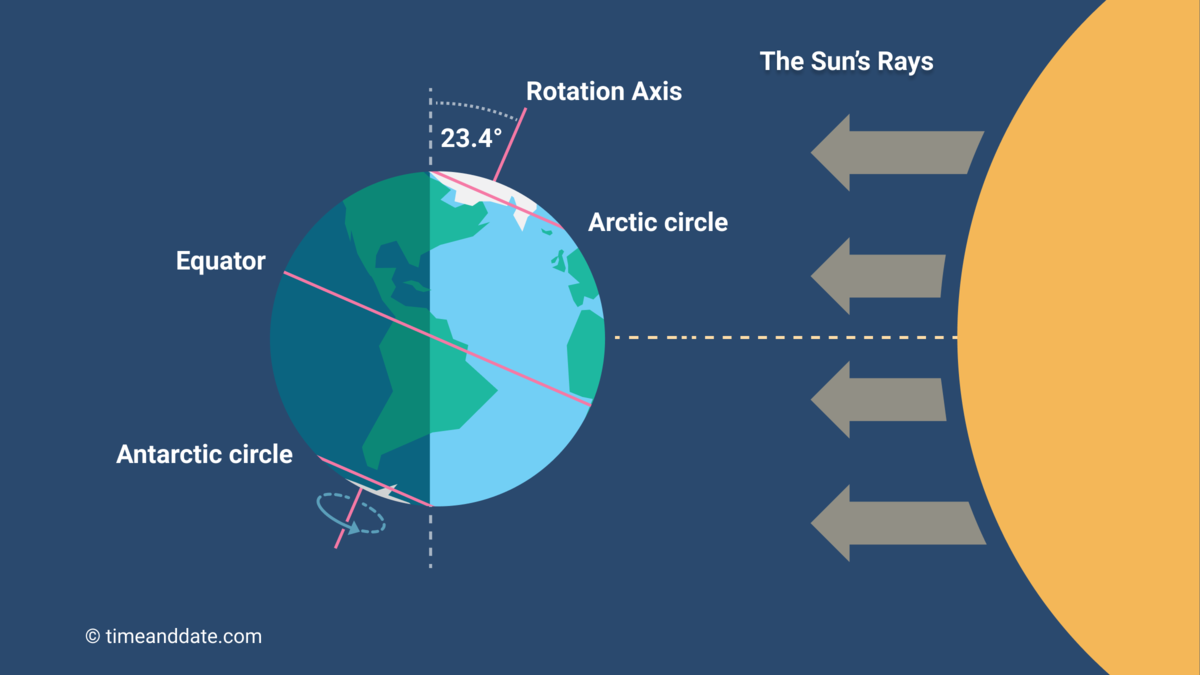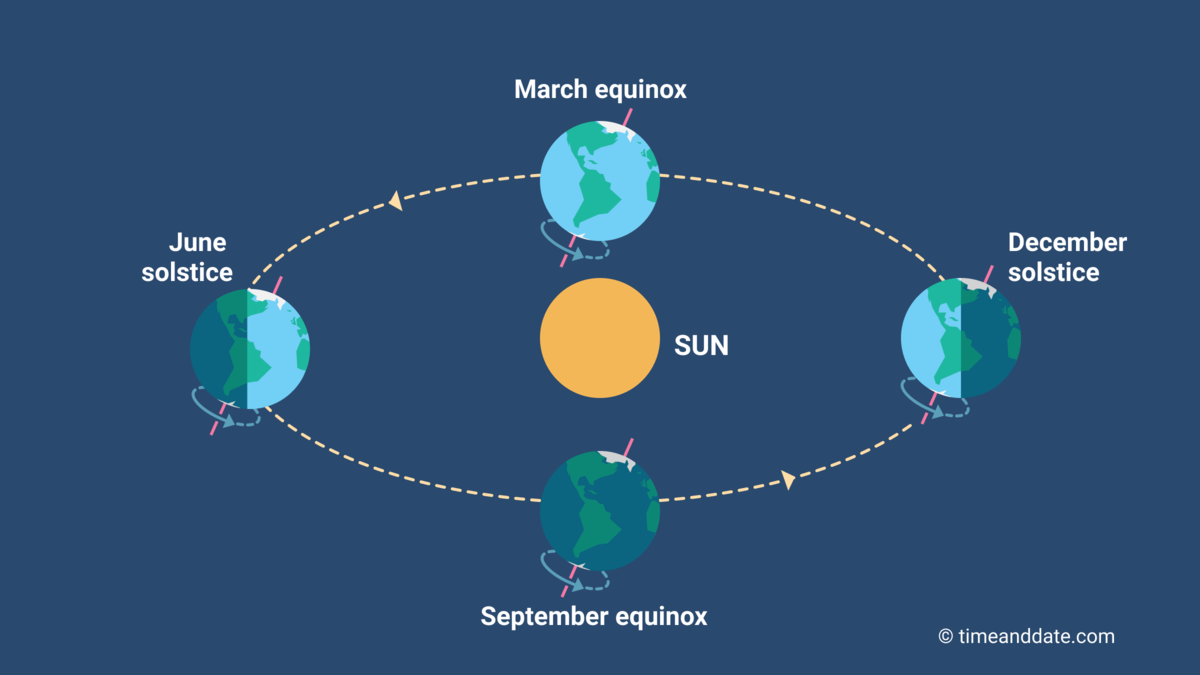June Solstice: Shortest and Longest Day of the Year
There are twosolsticesevery year: one in June andone in December.The June solstice marks the longest day north of the equator and the shortest day in the south.


Position of Earth in relation to the Sun during the June solstice.
© timeanddate
Equal day and night? It happens in June!
99% of people see sunlight simultaneously around the June solstice
Sun Reaches Most Northerly Point
The June solstice is the moment the Sun is directly above theTropic of Cancerin theNorthern Hemisphere.This is thenorthernmost latitudeit reaches during the year. After the solstice, it begins moving south again.
11 facts about the June solstice
Solstice Local Time & Date
In Singapore, Singapore:Friday, 21 June 2024, 04:50 SGT(Change location)
This corresponds to Thursday, 20 June 2024, 20:50 UTC.
Longest Day in the North
Since theNorthern Hemisphereis tilted toward the Sun in June, it receives more sunlight during the course of a day. The North Pole's tilt toward the Sun is greatest at the solstice, so this event marks thelongest dayof the year north of theequator.
This effect is greatest in locations that are farther away from the equator. In tropical areas, the longest day is just a little longer than 12 hours; in the temperate zone, it is significantly longer; and places within the Arctic Circle experienceMidnight Sun or polar day,when the Sun does not set at night.
Shortest Day in the South
Conversely, the day of the June solstice is theshortest dayof the year in theSouthern Hemisphere.Here, too, the effect is greater the farther a location is away from the equator.
Places within the Antarctic Circle experiencepolar night,when the Sun does not rise at all.
Sun times at the South Pole in June
Why Is It Called a “Solstice?”
During a year, the subsolar point—the spot on the Earth's surface directly beneath the Sun—slowlymoves along a north-south axis.Having reached its southernmost point at theDecember solstice,it stops and starts moving northward until itcrosses the equatoron the day of theMarch equinox.At the June solstice, which marks the northernmost point of its journey, it stops again to start its journey back toward the south.
This is how the solstices got their name: the term comes from the Latin wordssolandsistere,meaning“Sun”and“to stand still”.
Initially, the naming arose from observations of how the Sun’s apparent path across the sky changes slightly from one day to the next, which is caused by the same process as the subsolar point's movement described above.
In the months leading up to the June solstice, the position ofsunrise and sunsetcreeps northward. On the day of the solstice, it reaches its northernmost point. After that, the daily path of the Sun across the sky begins to creep southward again.
Why Does the Sun Move North and South?
The subsolar point moves north and south during the year because theEarth’s axis is tiltedat an angle ofabout 23.4°in relation to theecliptic,an imaginary plane created by Earth’s path around the Sun. InJune,theNorthern Hemisphereis tilted toward the Sun, and thesubsolar point is north of the equator.As the Earth travels toward the opposite side of its orbit, which it reaches inDecember,the Southern Hemisphere gradually receives more sunlight, and thesubsolar point travels south.


Earth is tilted as it orbits the Sun, which is why equinoxes and solstices happen.
©timeanddate
The Solstices and the Seasons
The June solstice marks thestart of summerin the Northern Hemisphere and thestart of winterin the Southern Hemisphere,according to one definition.
Equinox and solstice dates—years 1-2149
Sunrise and Sunset Times Lag Behind
The longest day of the year is commonly associated with the earliest sunrise and latest sunset of the year. However, in most locations, theearliest sunrisehappens a few daysbeforethe solstice,while thelatest sunsetoccurs some daysafterit.Find out why
The June Solstice in the Calendar
Even though most people consider June 21 as the date of the June solstice, it can happen anytime between June 20 and June 22, depending on the time zone. June 22 solstices are rare—the last June 22 solstice took place in1975,and there won't be another one until 2203.
Note:All dates refer toCoordinated Universal Time (UTC).Local dates may vary depending on the time zone.
Why Does the Date Vary?
The date of the equinoxes and solstices varies because a year inour calendar does not exactly matchthe length of thetropical year—the time it takes the Earth to complete an orbit around the Sun.
Today'sGregorian calendarhas365 daysin acommon yearand366 daysin aleap year.However, our planet takes about365.242199 daysto orbit the Sun. This means that the timing of the equinoxes and solstices slowlydrifts apartfrom the Gregorian calendar, and the solstice happens about6 hours latereach year. Eventually, the accumulated lag becomes so large that it falls on the following date.
To realign the calendar with the tropical year, aleap dayis introduced (nearly) every four years. When this happens, the equinox and solstice datesshift back to the earlier dateagain.
Other factors influencing the timing of the equinoxes and solstices include variations in the length of a tropical year and in the orbital and daily rotational motion of the Earth, such as the “wobble” in the Earth's axis (precession).